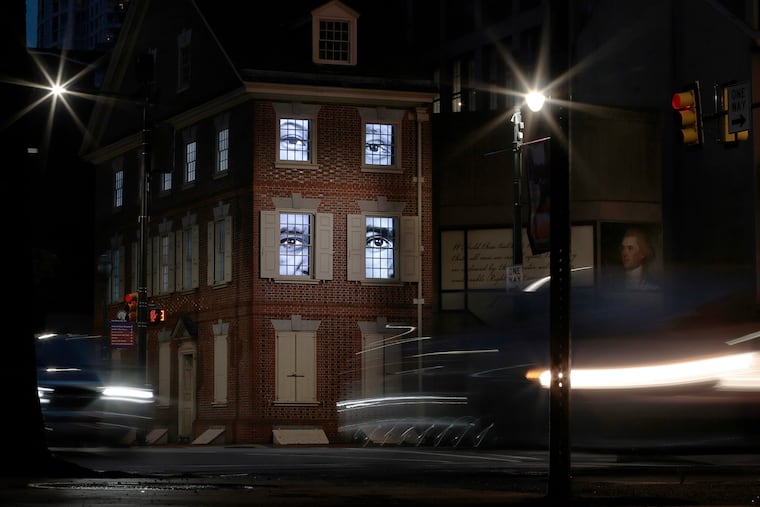The glowing eyes on Market Street represent the hidden history of Thomas Jefferson’s enslaved valet, Robert Hemmings
'Descendants of Monticello' is part of a Monument Lab public art project that examines the life of Robert Hemmings through the eyes of the descendants of Thomas Jefferson's enslaved people.
